By JULIE MINDA
Between April 2010 and July 2018, the population of Tacoma grew more than 9 percent, to upwards of 216,000, according to data from the U.S. Census Bureau. Growth has been similarly swift throughout the Seattle-Tacoma-Bellevue area of northwest Washington.
For eight hospitals that are part of CHI Franciscan of Tacoma, the population spike has meant increasing numbers of patients seeking care, and a resulting strain on bed capacity. And, yet, it is difficult to secure certificate of need approvals to expand bed counts, says Ian Worden, CHI Franciscan chief operating officer.
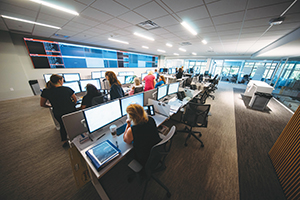
Staff at work in the CHI Franciscan Mission Control Center in Gig Harbor, Wash.
Two years ago, Worden learned of a collection of high-tech tools from GE Healthcare that promised to improve the efficiency of the health system's operations. The improved efficiency, the vendor said, would lead to better management of patient beds, which would free up capacity and allow for more patient admissions — without having to add beds.
Earlier this month, CHI Franciscan became the fifth health system in the world to employ the GE Healthcare technology platform.
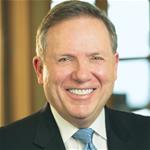
Worden
Worden says the new system will improve CHI Franciscan's ability to "ensure we get care to patients at the appropriate time and have the healing environment needed.
"At the time when people are most vulnerable, we want to make them feel they're in great hands. We do this by showing we know how to coordinate care that is in their best interest. This comes about when we have tight operational control," Worden says.
Centralized hub
New hardware at a hub in Gig Harbor, Wash., and at three satellite locations — much of the technology is from GE Healthcare — captures a wealth of data from all patient records, as well as information related to hospital operations, staffing and finances. All this input is processed through GE Healthcare software that uses artificial intelligence applications including machine learning, predictive analysis and high-velocity data fusion to make the data actionable, according to Worden. (See below.)
A growing team of 50-plus physicians, nurses, analysts and other experts staffs CHI Franciscan's new Mission Control Center, which is in a medical office building in Gig Harbor, Wash., about 12 miles northwest of Tacoma. CHI Franciscan has satellite centers at its hospitals in Washington's Federal Way, Tacoma and Silverdale.
Mission Control is staffed by about 20 people during the day and eight at night. They monitor a wall of 18 big-screen monitors displaying 12 "analytical tiles" of information that can be viewed from any vantage point in the room. GE Healthcare and CHI Franciscan worked together to customize and configure what data is pulled, processed and displayed on each tile.
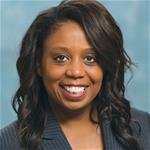
Ragsdale
That main room is set up as a 24-station "bull pen." Staff can pull up more granular information from the system on desktop computers, tablets or smartphones.
The tiles tell a story of what is happening at all CHI Franciscan hospitals simultaneously. This includes — or will include within the next several weeks as the ramp-up continues — data on how many beds are occupied, room preparation by environmental services staff, which beds are available and where, patient care activity, staffing, procedure scheduling, and other topline data.
Mary Ragsdale, a nurse executive who chairs the CHI Franciscan Mission Control board and the system's virtual hospital, says having centralized data already is "forcing us to change our culture — we're no longer viewing ourselves as individual facilities, but as one large system where we're all reliant on one another."
Logjams and bottlenecks
The combination of data aggregation technology and thoughtful analysis from Mission Control staff makes data actionable in real time, say Worden and Ragsdale. In the past, clinicians and back office staff had a lot of data at their fingertips, but they felt bombarded with information without the tools to process it efficiently. The result, says Worden, was logjams in patients' movement around the hospitals to access various needed services.
In time, Worden expects the system will cut wait times and he hopes in the near future to be able to provide patients with a type of itinerary, so they will know exactly what to expect and when during their hospital stay.
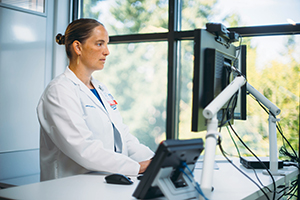
Dr. Jessica Kennedy-Schlicher is the medical director of the CHI Franciscan Mission Control Center.
Already the Mission Control staff and their colleagues at the satellite centers use information on the tiles to identify issues before they arise.
This approach includes — or shortly will include — using "big picture" analytics to track patients' care in order to ensure barriers are addressed so that patients do not have to wait as long for a bed, a test or a procedure. The data analytics can be used to determine if a particular patient or patients would be better served at a different site — perhaps at a CHI Franciscan hospital closer to their home, or at one with a different level of physician expertise such as a tertiary-level facility. The system can speed up the discharge process by flagging bottlenecks for staff even before patients become aware of a delay.
The platform also uses predictive analysis to determine appropriate staffing levels a day or two in advance, to inform the managers tasked with setting work schedules.
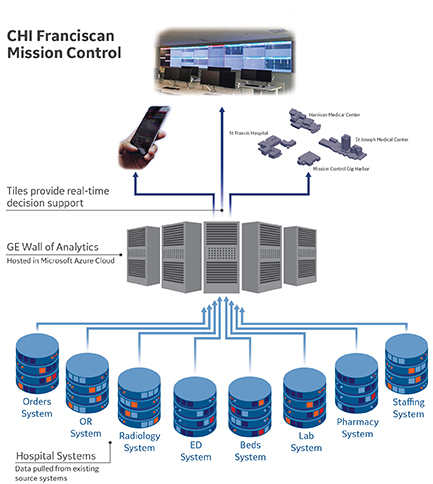
Courtesy of CHI Franciscan
Ragsdale, who is vice president, chief operating officer and chief nursing officer of St. Anthony Hospital in Gig Harbor, says in some cases CHI Franciscan is using data it always has had on hand and in some cases it is using newly mined data. But the key, she says, is that "we haven't seen data in this way before" — presented in a transparent, visual and easy-to-act-on way.
Closing gaps
Worden and Ragsdale described how the system works from a practical standpoint: For each tile or alert that appears on a tile, there is an "owner" at Mission Control and a predefined protocol that had been developed with staff. Worden says when an alert appears on a tile, the owner first researches the situation and then finds ways to help, primarily by "empowering and serving the hospitals and care teams.
"Mission Control staff help to expedite care," Worden says. "That's central to their work. This is needed because patient care delivery is so complex and cross-functional. Mission Control staff have the data and time to spot and close gaps, sometimes even predict gaps."
The system can flag patients whose length of stay is long for their condition. Analysts can then work with clinicians to determine why that is the case and whether changes in the care plan are needed.
"In the long run, we'll be able to take care of more patients as we get more efficiency," says Worden. "We'll be streamlining processes so that we can deliver more care at the bedside but at a lesser cost."
CHI Franciscan will be ensuring care quality is not only maintained with the new system but also improved, says Worden. As new functionality comes on line in the coming weeks, it will be able to flag when there is a digression from an evidence-based protocol for an individual patient.
Possibilities
Worden says CHI Franciscan is focusing first on the patient flow and capacity improvements and will turn to the clinical oversight in the coming weeks.
While the Mission Control system currently is focused on inpatient care data, it has data represented on the tiles that is related to prehospital and post-acute care areas as well. Worden says, "I'm excited to see how our command center might evolve to add value to the health system across patient care spaces."
Artificial intelligence functions make raw data usable
According to information from CHI Franciscan, the Mission Control Center relies primarily on these artificial intelligence applications:
- Machine learning: Algorithms enable the system to "learn" to detect patterns through regular review of performance data. The learning enables recommendations for adjustment.
- Predictive analysis: A type of machine learning that anticipates elements like patient census and problems like care bottlenecks.
- High-velocity data fusion: The software processes massive amounts of information very quickly.